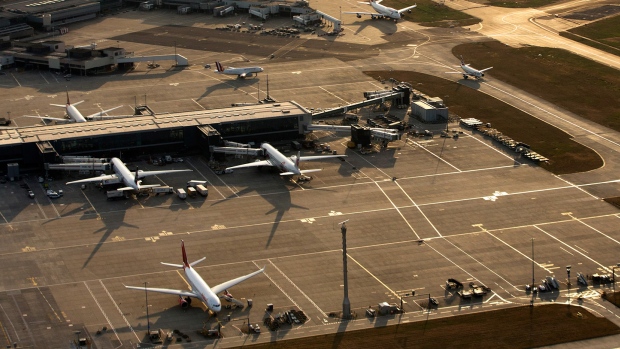Jan 8, 2019
Heathrow airport reopens after drone sighting prompts temporary halt
, Bloomberg News

London’s Heathrow airport was partially shut for more than an hour Tuesday evening following reports of drone activity, weeks after the city’s Gatwick hub closed for the same reason and ruined holiday plans for thousands.
Departures were halted after sightings of possible drones in the vicinity of Europe’s busiest airport after 5 p.m. local time, according to the Metropolitan Police. Services resumed following an evaluation of the threat to safety, with the government saying it was looking at bringing in the military.
The latest incident spurred concern that Heathrow may have been targeted after the drone raids on Gatwick caused travel chaos for more than 150,000 people. That event, which grounded jets on the Wednesday before Christmas and led to days of disruption, raised questions about the preparedness of airports for encroachment by drones into commercial airspace.
Transport Secretary Chris Grayling said on Twitter during the Heathrow scare that he’d consulted with Home Secretary Sajid Javid and Defence Secretary Gavin Williamson and that if necessary the military would deploy the same equipment that allowed the resumption of flights of Gatwick.
Read more: Gatwick Airport Chaos Exposes How Much Havoc Drones Can Create London Gatwick Turns to Army as Drones Ruin Holiday Getaway Gatwick Drone Raid’s Legacy of Lost Fees, Fortified AirportsHeathrow may be better able to cope with drone disruption as it has two runways to Gatwick’s one. While two people were questioned by police about the earlier incident, no-one was charged and the investigations continue.
The latest drone reports come a day after the U.K. Department for Transport said it was moving ahead with plans to give police additional powers to tackle the misuse and abuse of the unmanned craft.
New steps could also include technology to detect and repel drones near airports and an extension to exclusion zones that bar them from flying above 400 feet and within 1 kilometer (0.6 miles) of an aviation hub.
Earlier Tuesday, Heathrow said it aims to boost capacity even before a new runway opens, employing measures including a rejigging of the way two existing landing strips are used to add 25,000 flights a year, or 5 per cent more than a current cap. The project is part of a consultation on the 16 billion-pound (US$20 billion) third runway.


